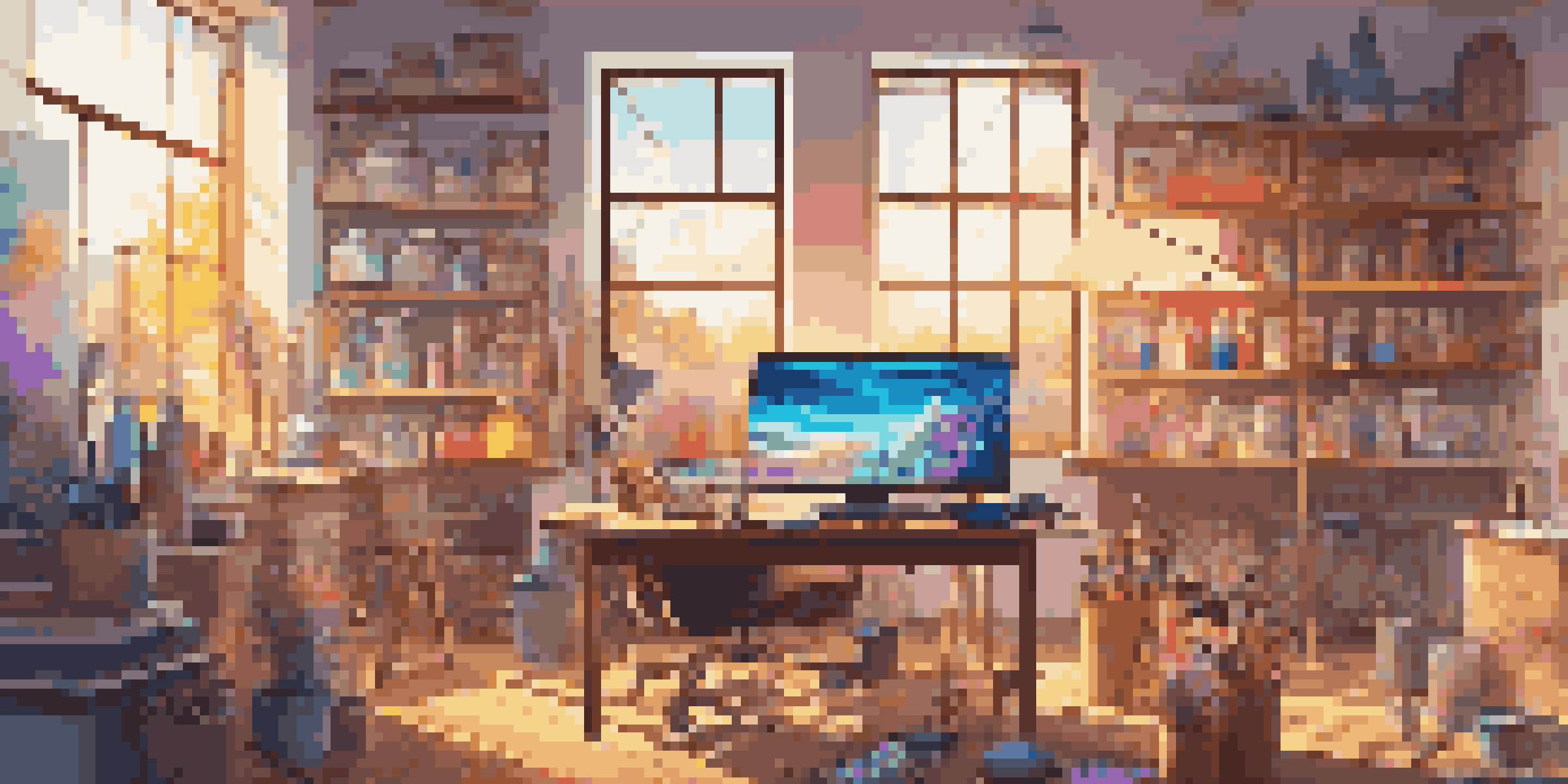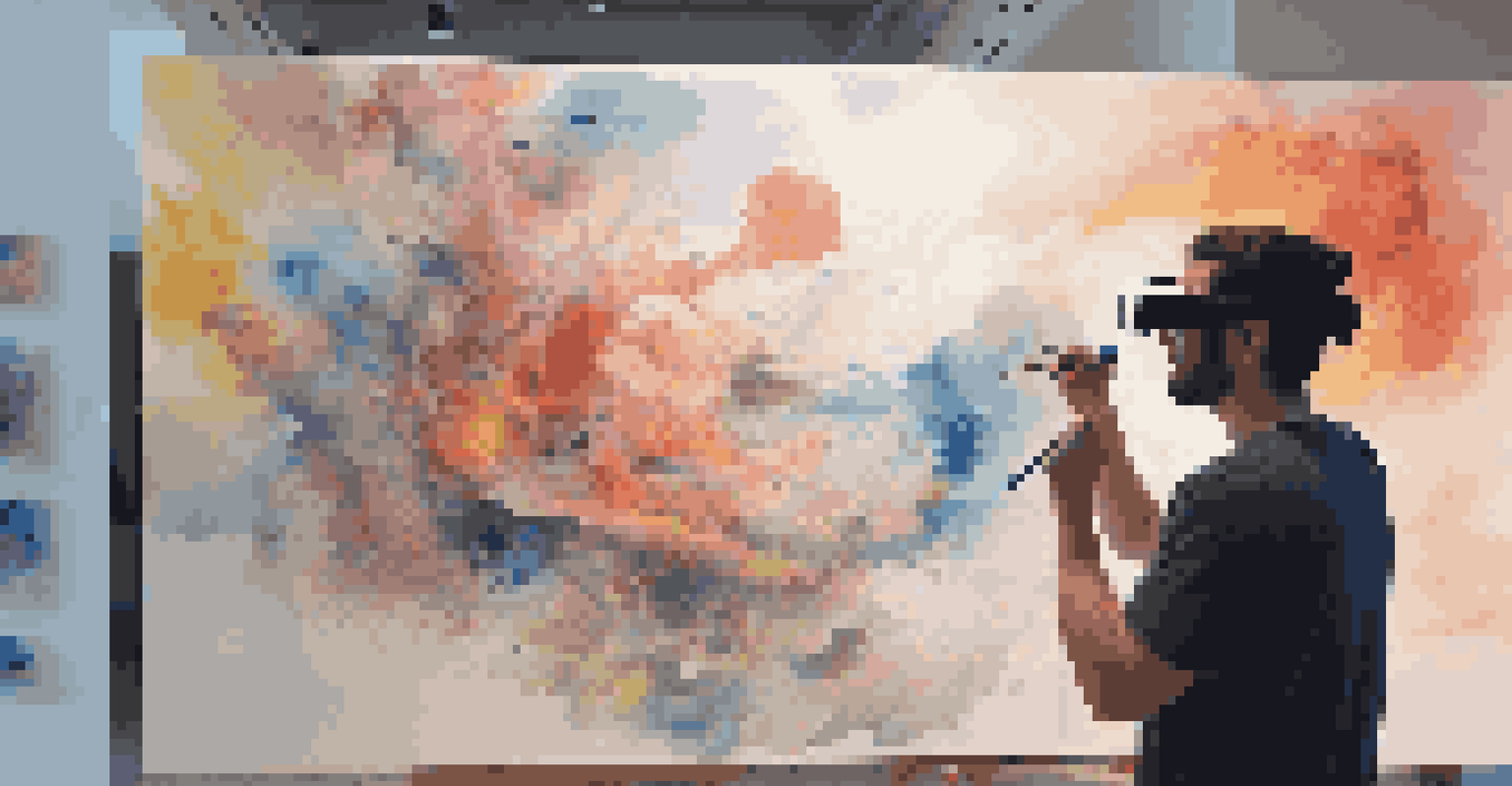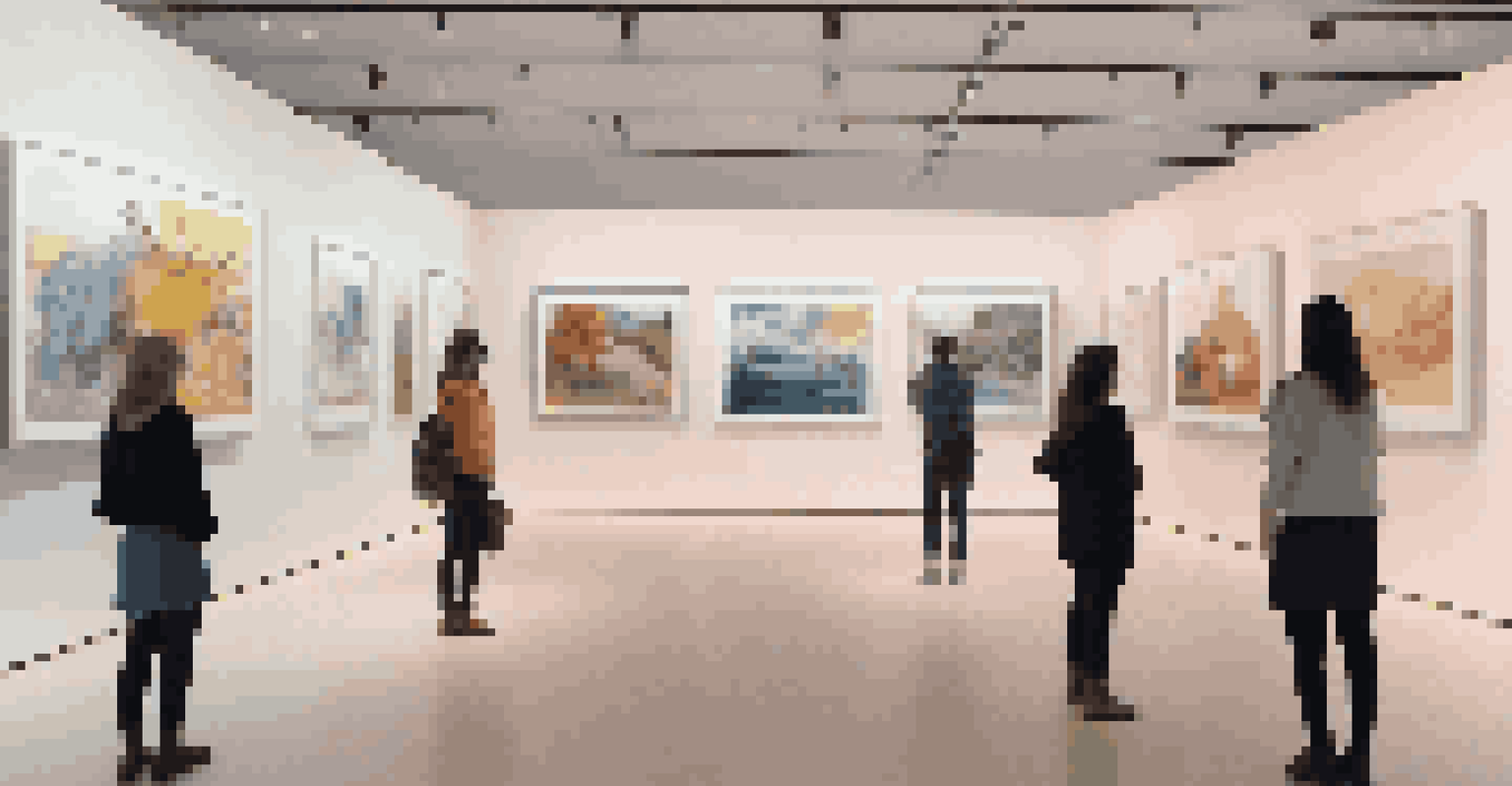The Shift from Physical to Digital: Art in the Modern Age

Understanding the Transition: From Canvas to Screen
The art world has seen a monumental shift from traditional methods to digital formats, impacting how artists create and share their work. Once dominated by canvas and paint, the realm of art now embraces pixels and software. This transition enables artists to explore new dimensions of creativity, allowing for more experimentation and innovation than ever before.
Art is not freedom from discipline, but disciplined freedom.
Digital art has transformed the creative process, making it accessible to a broader audience. Artists can now produce works using tablets, software, and even virtual reality, opening up avenues that were previously unimaginable. Consider how a painter can now replicate their techniques digitally, blending the tactile experience with the digital realm, thereby reaching new heights of expression.
This evolution from physical to digital also means that art can be shared instantaneously across the globe. Platforms like Instagram and digital galleries have democratized art consumption, making it easier for both artists and enthusiasts to connect. The result? A vibrant, ever-evolving art community that thrives on collaboration and inspiration.
The Role of Technology in Modern Art Creation
Technology plays a crucial role in shaping the landscape of modern art, serving as both a tool and a medium. Artists use various software programs to create intricate designs, animations, and interactive pieces that challenge traditional notions of artistry. This technological integration enhances creativity, enabling artists to push the boundaries of their imagination.

Moreover, tools like augmented reality (AR) and virtual reality (VR) offer immersive experiences for viewers. Imagine walking through a gallery where you can interact with the art, altering its appearance or experiencing it from different perspectives. This not only enriches the viewer's experience but also invites them into the artist's world in unprecedented ways.
Digital Art Expands Creative Horizons
The shift from traditional to digital art allows for unprecedented experimentation and accessibility for artists and audiences alike.
As artists harness these technologies, the question arises: does this diminish the value of traditional art forms? While some may argue that the soul of art lies in its physicality, others see digital art as an evolution of artistic expression. Ultimately, it's about how artists choose to convey their vision—whether through a brushstroke or a digital interface.
The Impact of Social Media on Art Distribution
Social media has revolutionized how art is distributed and consumed, breaking down barriers that once limited exposure. Platforms like Instagram, TikTok, and Pinterest serve as virtual galleries, allowing artists to showcase their work to a global audience. This shift has given rise to a new generation of artists who build their brands online, often finding success without traditional gallery representation.
The great thing about digital art is that it allows you to experiment and play without the fear of making a mistake.
Take, for instance, the phenomenon of viral art challenges that encourage creativity and community engagement. Artists can share their processes, engage with followers, and receive instant feedback, creating a dynamic interaction that fuels their creativity. This immediacy fosters a sense of belonging and collaboration among artists and art lovers alike.
However, this digital exposure comes with its own set of challenges. While artists can gain visibility, they also face the pressure to constantly produce content to stay relevant in a fast-paced online world. Balancing creativity with the demands of social media can be a tightrope walk, but many find that the benefits of connection and engagement outweigh the drawbacks.
Challenges Faced by Digital Artists Today
Despite the many advantages of digital art, artists face unique challenges in this evolving landscape. One major hurdle is the issue of copyright and intellectual property. With the ease of sharing and replicating digital content, artists must navigate a complex web of protection to safeguard their creations.
Additionally, digital art can sometimes struggle for recognition in traditional art circles. While it has gained popularity, some still view it as less legitimate than its physical counterparts. This perception can affect funding opportunities, exhibition spaces, and overall appreciation of digital works, leaving artists advocating for their place in the art world.
Social Media Transforms Art Sharing
Platforms like Instagram and TikTok have revolutionized how artists distribute their work, fostering a vibrant community and real-time engagement.
Moreover, the saturation of the digital market makes it increasingly difficult for artists to stand out. With thousands of creators vying for attention, finding a unique voice and niche can feel daunting. Yet, many artists embrace this challenge, using it as motivation to innovate and refine their craft.
The Role of NFTs in the Art World
Non-fungible tokens (NFTs) have emerged as a game-changer in the digital art landscape, offering new ways for artists to monetize their creations. By attaching a digital certificate of ownership to their works, artists can sell unique pieces in a way that wasn't possible before. This has opened the floodgates for digital art sales, creating new revenue streams for creators.
However, the rise of NFTs also brings about questions regarding environmental impact and market sustainability. The energy consumption associated with blockchain technology has sparked debates among artists and collectors alike. Many are now seeking eco-friendly alternatives or exploring ways to offset their carbon footprint.
Despite the controversies, NFTs have democratized art ownership, allowing collectors to purchase and showcase works from emerging artists. This shift encourages diversity in the art community, as collectors can support a wider array of voices. As the NFT market continues to evolve, it will be interesting to see how it shapes the future of digital art.
The Future of Art: Blending Physical and Digital Worlds
The future of art seems poised for a fascinating blend of physical and digital experiences. As technology advances, artists are increasingly experimenting with hybrid forms that incorporate both realms. Imagine a physical painting that comes to life through augmented reality, adding layers of interaction and storytelling to a traditional piece.
This fusion not only enhances the viewer's experience but also challenges our understanding of what art can be. As artists continue to explore these boundaries, they invite audiences to engage with art in multifaceted ways, transforming passive observation into active participation. This shift could redefine the role of the audience in the art-making process.
NFTs Redefine Art Ownership
Non-fungible tokens offer artists new monetization methods, while also raising important discussions about environmental impact and market sustainability.
Moreover, as virtual exhibitions and galleries become more mainstream, audiences can enjoy art from the comfort of their homes while still experiencing the thrill of a gallery visit. This new model of art consumption may lead to a more inclusive and diverse art world, where creativity knows no bounds, and everyone can find their place.
Embracing Change: The Artist's Perspective
For many artists, the shift from physical to digital is both exciting and daunting. Embracing new tools and platforms often requires a willingness to adapt and learn. However, those who embrace this change find that it opens doors to new forms of expression and connection with audiences.
Artists are increasingly recognizing the value of diversifying their skills, merging traditional techniques with digital innovation. This adaptability not only enhances their creative repertoire but also positions them favorably in a rapidly changing market. The ability to pivot between mediums has become an essential skill for contemporary artists.

Ultimately, the journey from physical to digital art is a testament to the resilience and creativity of artists. By embracing change, they not only redefine their practices but also contribute to a broader conversation about the future of art in our increasingly digital world. It’s an exciting time to be an artist, and the possibilities are endless.